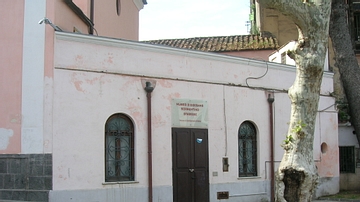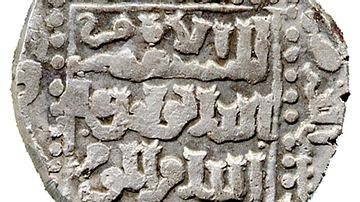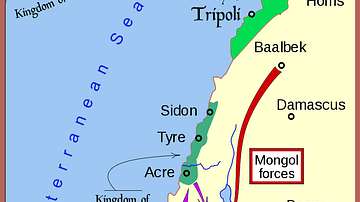Search Images
Browse Content (p. 789)

Image
Museo Diocesano Sorrentino-Stabiese
The entrance to the Museo Diocesano Sorrentino-Stabiese in Castellammare di Stabia (Italy).

Image
Thomas Wolsey, Cardinal Archbishop of York
A 16th century CE portrait of Thomas Wolsey (l. c. 1473-1530), Cardinal Archbishop of York and Lord Chancellor to Henry VIII of England (r. 1509-1547 CE). (Trinity College, Cambridge, England)

Image
Pope Clement VII by Sebastiano del Piombo
A 1526 CE portrait by Sebastiano del Piombo of Pope Clement VII (r. 1523-1534 CE). (National Museum of Capodimonte, Naples, Italy)

Image
Mamluk Lancers
Hopfer, Daniel (c. 1470-1536 CE): Etching, Three Mamelukes with lances on horseback.

Image
Mamluk Training with a Lance
Mamluk lance practice from a Furusiyya manuscript. Egypt or Syria; c. 1500 CE, Leaf: 24 × 16.7 cm, David Collection.

Image
Battle of Wadi al-Khazandar
14th-century CE illustration from a manuscript of depicting the Battle of Wadi al-Khazandar (Battle of Homs), 1299 CE, in which the Mamluks were routed by the forces of the Mongol Ilkhanate.
BNF Nouvelle acquisition française 886, fol. 31v

Image
Silver Coin of Aybak
Silver dirham of the first Mamluk Sultan Aybak minted in Cairo in 1256 CE.

Image
Gold Coin of Mamluk Sultan Al-Mansur Ali
Gold dinar of Mamluk sultan al-Mansur Ali minted in Cairo in 1258/59 CE.

Image
Battle of Ain Jalut (1260 CE)
A map of the campaign leading to the Battle of Ain Jalut — in 1260 CE.

Image
Statue of Sultan Baibars
Bronze bust of Sultan Baibars (aka Baybars) in Cairo, at the National Military Museum.